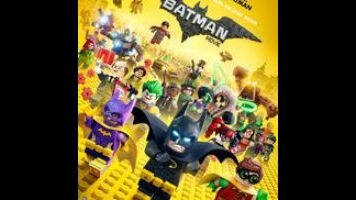The Joker, meanwhile, feels stung by Batman’s refusal to acknowledge the importance of their relationship. (The Bat doesn’t do relationships, even rivalries between sworn enemies.) To prove his mettle, he puts in motion a plan that will ostracize Batman from his beloved crimefighting: He turns over the full rogues’ gallery that terrorizes the streets of Lego Gotham, including himself. Basically, it’s a reverse Knightfall situation, exacerbated by new police commissioner Barbara Gordon (Rosario Dawson). She’s less keen on just pressing the Bat-signal button to solve all of Gotham’s problems with what she describes as an “unsupervised adult man in a bat costume karate-chopping poor people.” Distracted by his fascination with Barbara, Bruce Wayne also unwittingly agrees to adopt young Dick Grayson (Michael Cera), an eager-to-please orphan.
There are countless stories about Batman coming to terms with his need for a family, including Batman & Robin, evoked by this movie’s core of Batman, Alfred, and early versions of Robin and Batgirl forming a surrogate family. In some ways, The Lego Batman Movie is that Joel Schumacher nightmare gone right: It’s a goofier Batman, depicted through a variety of merchandise-friendly toys and a barrage of brightly colored visuals, but with jokes that are often sly or proudly silly, not lazy attempts at camp. Director Chris McKay and his six-man writing team also throw in a lot of references to Batman lore. During their first skirmish, Batman refers to past Joker exploits such as “the two boats” and the time he danced to Prince music. Another brief sequence cycles through Lego recreations of a dozen-plus famous Batman images, while the score lifts elements of various Bat-themes.
Lego Batman does share some common ground with the Schumacher movies, owing to its reproduction of the Lego Movie style of computer animation presented to look like stop-motion Legos. Without the surprises of the earlier film—both the initial surprise of its eye-pleasing look and the late-breaking surprise of its live action twist—the frenetic scenes of brick destruction start to look like the real (and unreal) thing, like special effects on overload. But most of the time, the movie recreates its predecessor’s simulation of playing with Legos on a sugar bender, this time filtered through Batman fandom.
In rampaging through Batman mythologies like a child through a playroom, the movie makes an admirable attempt to reconcile kid-friendly adventures with the character’s psychological pain. Arnett plays Batman as, essentially, a young Bat-fan determined to maintain the invincibility of his favorite hero (in this case, himself) even as reality encroaches on his lone-vigilante fantasy; it’s no accident that Alfred can be glimpsed reading a child-rearing book at one point. Cera syncs with this interpretation by playing up Robin’s more innocent childlike qualities. He finds such endearment doing so that despite the spoofy trappings, this Robin rises above mere parody to become a flat-out charming iteration of the superhero sidekick.
Though barely less expansive in speaking parts, The Lego Batman Movie feels slightly less joke-dense than its big-umbrella sibling. With a roll-call list of Bat-villains ranging from iconic to Orca, it’s a little disappointing that more of them don’t get to shout out a great gag amidst the clamor (though there are some wonderful in-jokes and weird impressions in the voice casting of these bit parts, including the fact that Ralph Fiennes does not return to one of his most famous roles). If The Lego Movie was a delightful tribute to the multifaceted experiences of playing with Legos, this movie is like one of the licensed sets that inspired it: Less essential, more market-driven, and still irresistible for certain kids, fans, and nerds.

